Some places exist on the edges of maps, known, yet unknown. Halayeb and Shalateen is one of them. Mentioned in passing, often misunderstood, this remote corner of Egypt lives in the margins, its people reduced to an abstraction, distant, unfamiliar, unknown. It’s a place most Egyptians have heard of but can’t quite picture. Who lives there? What do their lives look like? The answers remain a mystery to many.
For centuries, the Bishari Tribe of the Beja people have inhabited various regions extending from the Nile River to the Red Sea, including areas around Halayeb, Shalateen, and the valleys of Gabal Elba, moving with the land, preserving a way of life that predates the borders drawn around them. Their traditions remain intact, their language still spoken, their presence a quiet defiance against disappearance. And yet, despite their deep ancestral roots, they have largely remained outside the modern Egyptian narrative. Their faces, traditions, and stories rarely find a place in public consciousness, leaving an entire culture on the brink of invisibility.
Project People of the Misty Oasis is a visual record of this overlooked world. It is a collection of faces, gestures and voices. A testimony to those who have endured. These portraits do not attempt to preserve the past. They affirm the present.
Ahmed & Mohamed of the Amirab Tribe
"For years, I wanted to see it for myself, not just to visit, but to document the people who call this land home in a way that felt personal, not distant. I wasn’t looking for landscapes or silhouettes; I wanted to capture portraits that could reshape perceptions, tell authentic stories, and perhaps even offer a sense of pride to those being seen”. Sharing the same curiosity and purpose, photographer Karim Osama joined forces with filmmaker Fady Emad, who sought a meaningful story for his graduation project. Together, they embarked on a road that few travel. After months of research, endless waiting for approvals, and moments when giving up seemed inevitable, they finally got the green light.
The road to Halayeb and Shalateen stretches over 1,100 kilometers from Cairo, passing through shifting landscapes—coastlines, open desert, small towns built around movement and trade. Marsa Alam, then Shalateen, then Abu Ramad—the last stop before the mountains begin.
Upon arriving in Wadi Aidieb of Gabal Elba, the first figures appeared as silhouettes in the distance. A shepherd walking alone, barely visible to the naked eye. The lens brought him closer—his shape emerging against the landscape, his presence a reminder that this place, though quiet, is never empty. Here, the Amirab tribe, members of the Bishari Tribe, continue a way of life closely tied to tradition and shaped by the natural rhythm of the land around them.
Hussein a shepherd of the Amirab Tribe
Each portrait captured during this project represents not just an individual, but a living connection to history. The Amirab have quietly maintained their ancestral customs, language, and communal traditions despite limited exposure to the outside world. Shepherds guide their animals along the rugged terrain, community members gather to prepare coffee, bread, and meals.
Throughout the gathering, the atmosphere remained relaxed and welcoming. Young men displayed pride in their heritage, carrying traditional swords symbolic of their history. Elders stood quietly, their expressions calm and dignified. Young people showed enthusiasm as they participated in traditional dances, expressing their joy through movements passed down for generations. Traditional songs and dances remain central to their interactions.
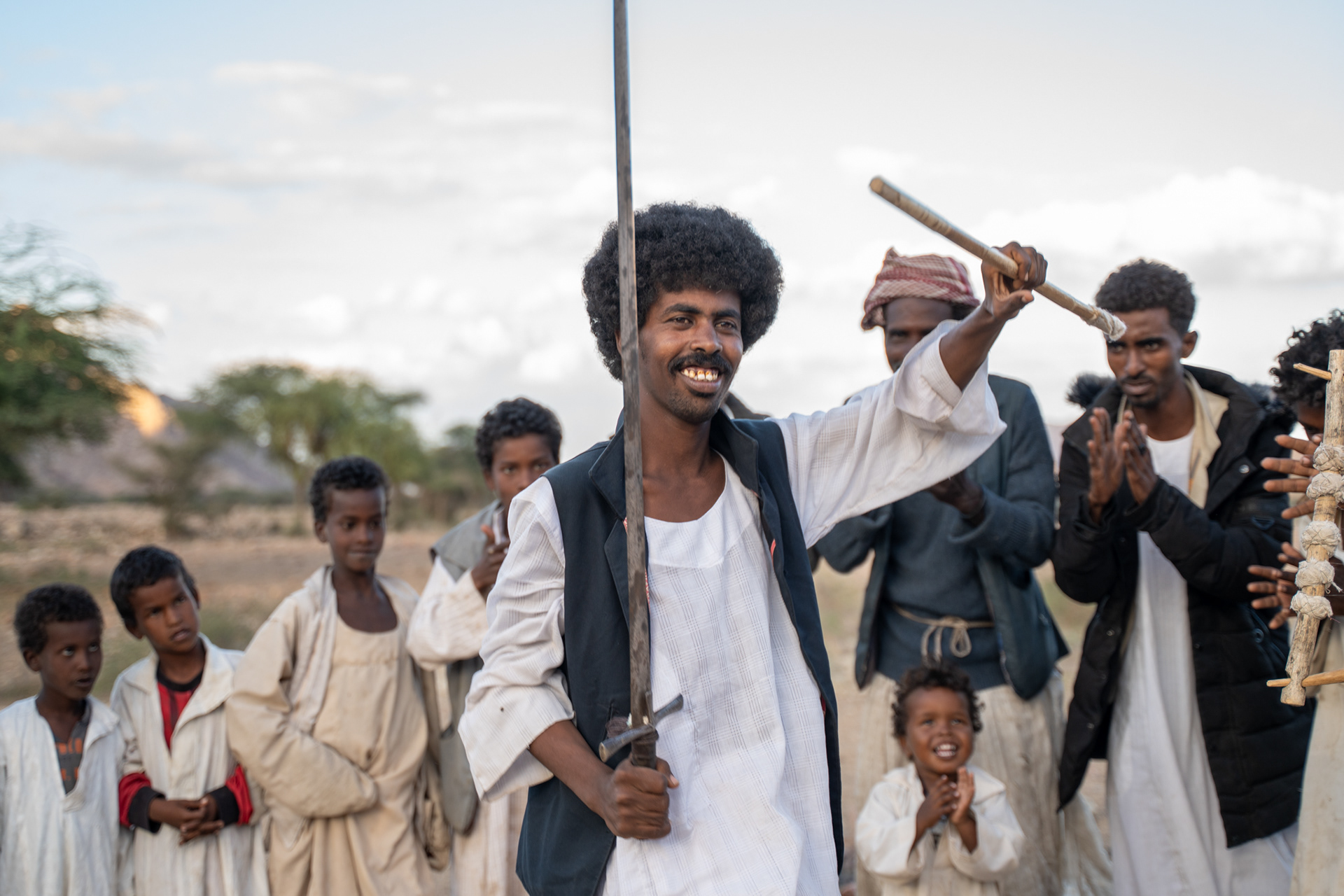
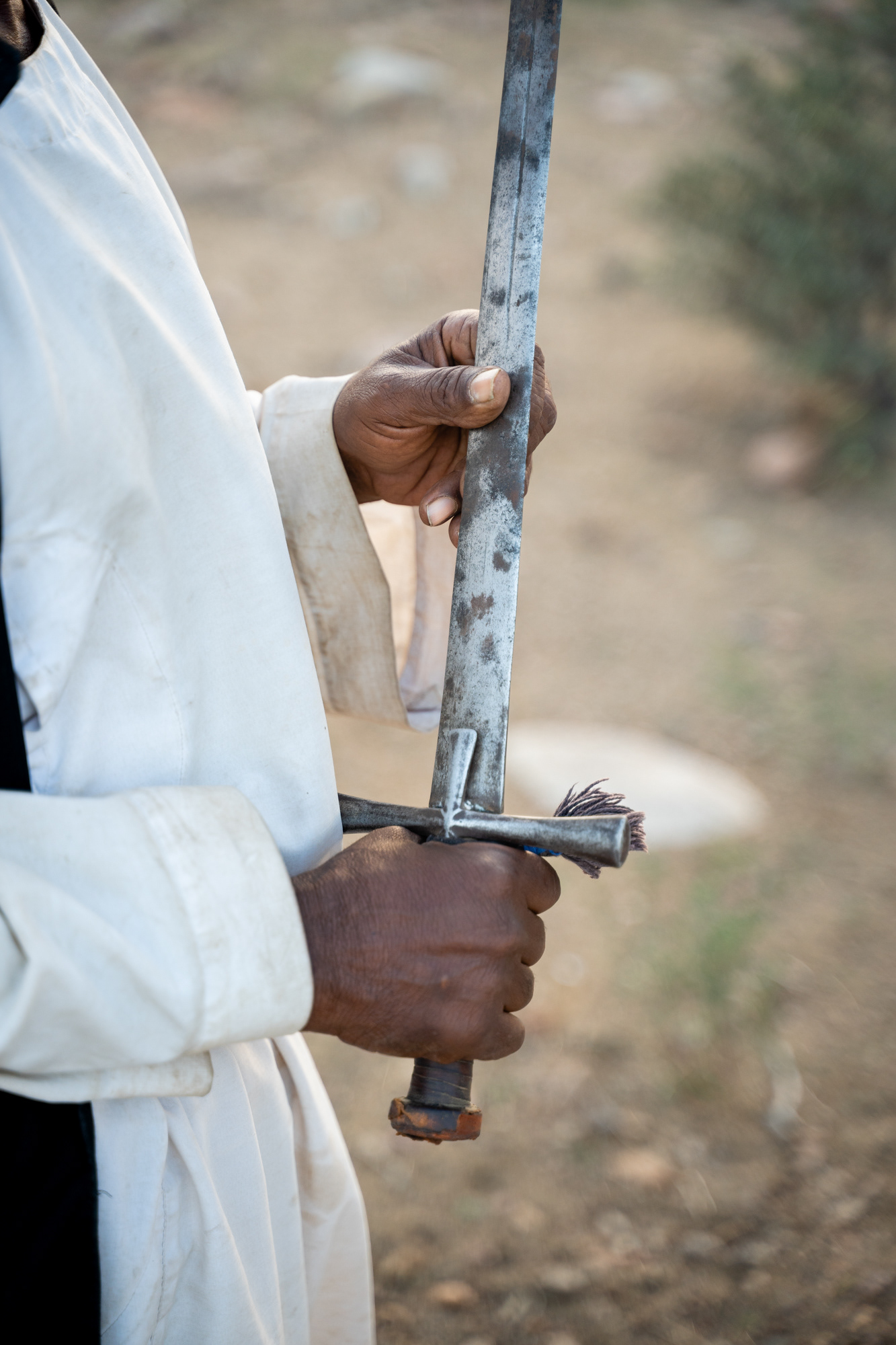
While capturing the portraits, it became clear these were not individuals disconnected from the modern world. Rather, they were people actively choosing to preserve their cultural identity, living simply yet proudly in their own traditions. The project became more than photography—it was about witnessing the resilience of a community whose stories rarely reach broader awareness.
The portraits taken are reminders of their presence, not as historical artifacts, but as evidence that this culture, often perceived as distant or fading, is still here—living, breathing, and continuing its story.
As the journey continued, we traveled to Wadi Yahamib, another of Gabal Elba’s valleys, home to the Ammar tribe, also part of the larger Bishari community. Unlike the lush, Afro-tropical landscape of Wadi Aidieb, Yahamib presented a completely different environment—distinctly North African, desertous, and expansive, with camels noticeably more abundant. Here, Karim captured portraits of three members of the Ammar tribe, highlighting once again the rich diversity and adaptability of Bishari traditions in response to their unique surroundings.
Further into the journey, in Abu Ramad—the nearest town before the mountains—a meeting took place with Sheikh Ohag, the respected chief of chiefs of town, who has witnessed almost a century of change in the region. His recollections provided depth to the project, as his steady voice recounted the history of his people and the transformations he's lived through. Sheikh Ohag’s perspective wasn’t nostalgic; it was a thoughtful reflection on identity and survival, reminding viewers that the Bishari story is not just one of tradition, but also adaptation and endurance.
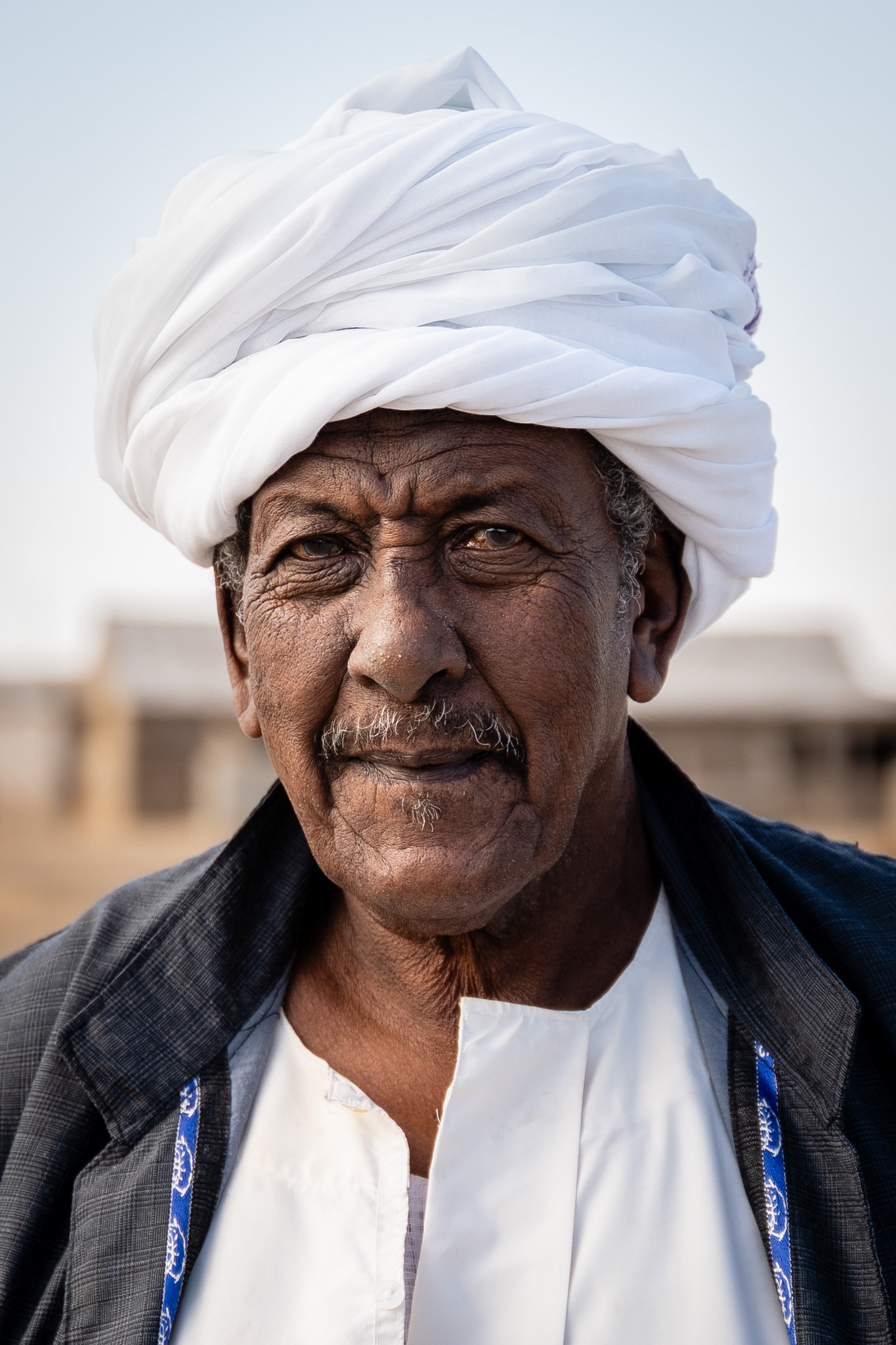
Sheikh Ohag
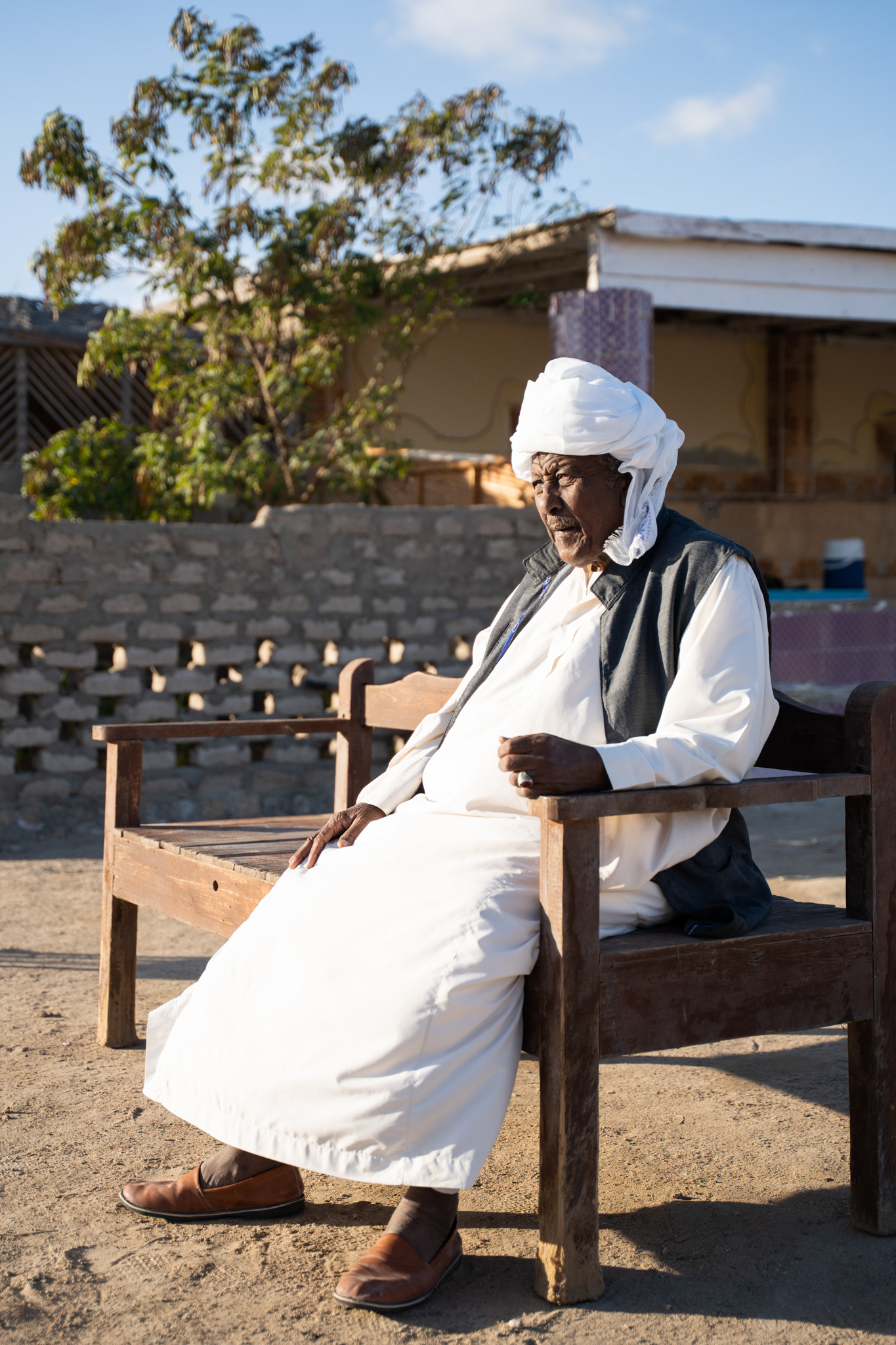
Sheikh Ohag
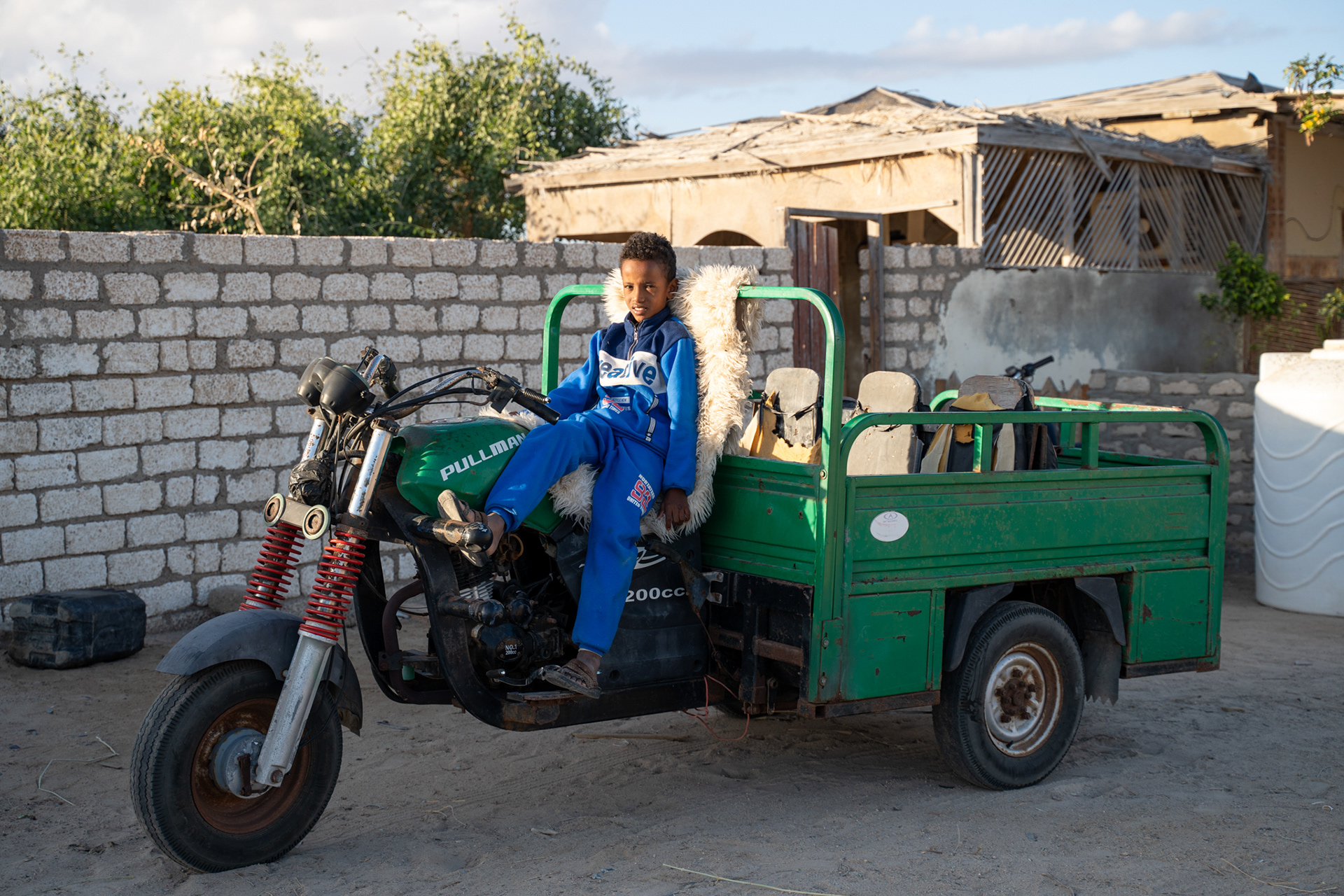
Mazen Ohag
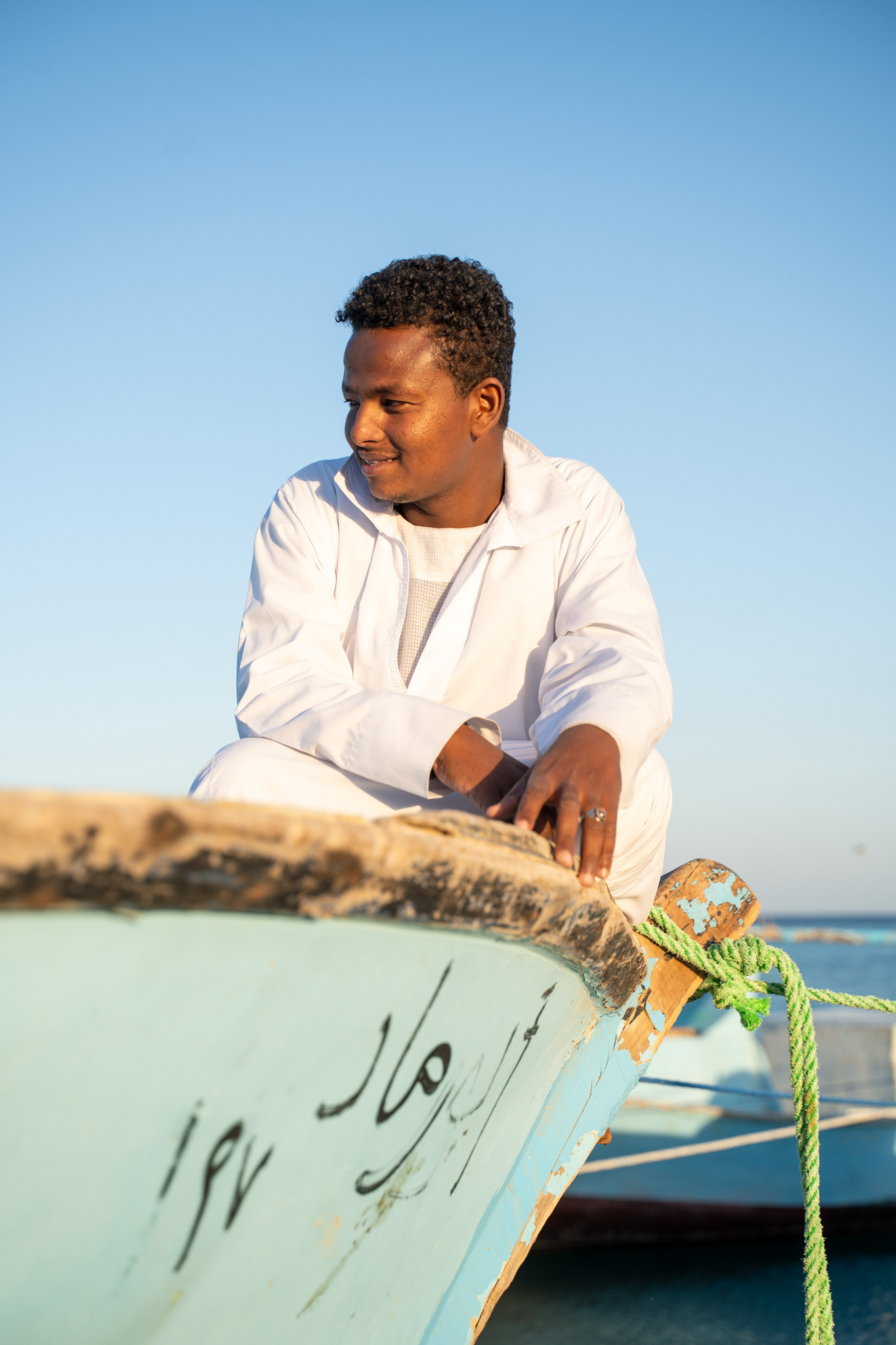
Hassan Ohag
People of the Misty Oasis is more than a documentation of an isolated community—it is a window into a vanishing heritage. In an era where globalization threatens to erase indigenous cultures, this project seeks to honor their existence, preserve their identity, and challenge the notion that some stories are too distant to be told.
The project isn’t just about them—it’s about us. It’s about how we choose to see, engage, and remember the communities that define the diverse fabric of Egypt and the Arab world. This is not a story about the past. This is a story about survival. About identity. About belonging.
Through this project, I hope to share their world with those who may never set foot in the misty valleys of Gabal Elba—so that they, too, can see the beauty in faces that history has long overlooked.
I would like to thank my partners who made this project possible.
Fady Emad & Mgd George